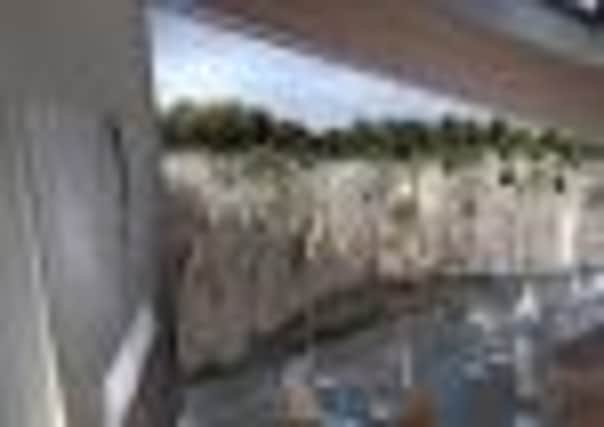Plans afoot to tell Aberdeen’s granite story


The futuristic design is being planned for a new visitor centre, celebrating Aberdeen’s lost granite industry, at the abandoned Rubislaw Quarry – the 500ft chasm created in making Aberdeen the “Granite City.”
Part of the building – made of glass and granite – will overhang the quarry, now filled with water since it was last used for granite extraction in 1971. Over 231 years, six million tonnes were hewn from Rubislaw Quarry for building projects across Aberdeen, leaving the massive crater on the edge of the city’s West End.
Advertisement
Hide AdAdvertisement
Hide AdThe site was bought two years ago by two local businessmen, Hugh Black and Sandy Whyte, and they have now announced proposals to build a multi-million-pound heritage centre on the western edge of the quarry, close to Queen’s Road.


Mr Black said yesterday that he hoped the construction of the landmark building could be used to spearhead Aberdeen’s drive to be named the UK City of Culture in 2017.
He explained: “We are really excited about this project. It is an iconic building for an iconic site. And it will allow visitors for the first time to look directly down into the quarry itself.
“We are planning a heritage centre, telling the story of Aberdeen’s granite industry, and a conference centre and restaurant. Education is a key part of the project. Nobody can visit the site at all just now, and the idea of taking a classroom of kids to somewhere like that and telling them the story of our granite heritage would be fantastic.”
He added: “We are maybe just a generation away from losing all that history. We don’t want that granite heritage to fall back into obscurity. Aberdeen has something great in Rubislaw Quarry. This site is as important as Edinburgh Castle is to Edinburgh.”
The two businessman are also planning to partially drain the giant hole.
However, Mr Black explained: “Even if we drain 40 metres, we will still be left with 100 metres of water. We have already been approached by various oil service companies for ROV [remotely operated vehicle] facilities and we have had divers down saying it is an interesting dive site. So there could be some commercial activity in the quarry.
Advertisement
Hide AdAdvertisement
Hide Ad“We might even have a floating viewing platform in the middle of quarry. That could be something special.”
The building, which is expected to cost between £5 million and £10m, has been designed by David Halliday, of Aberdeen-based architects Halliday Fraser Munro.
He said: “This is a fantastic opportunity to showcase an important part of Aberdeen’s history. The innovative and dynamic design complements the existing dramatic setting and will give visitors an unforgettable experience.”